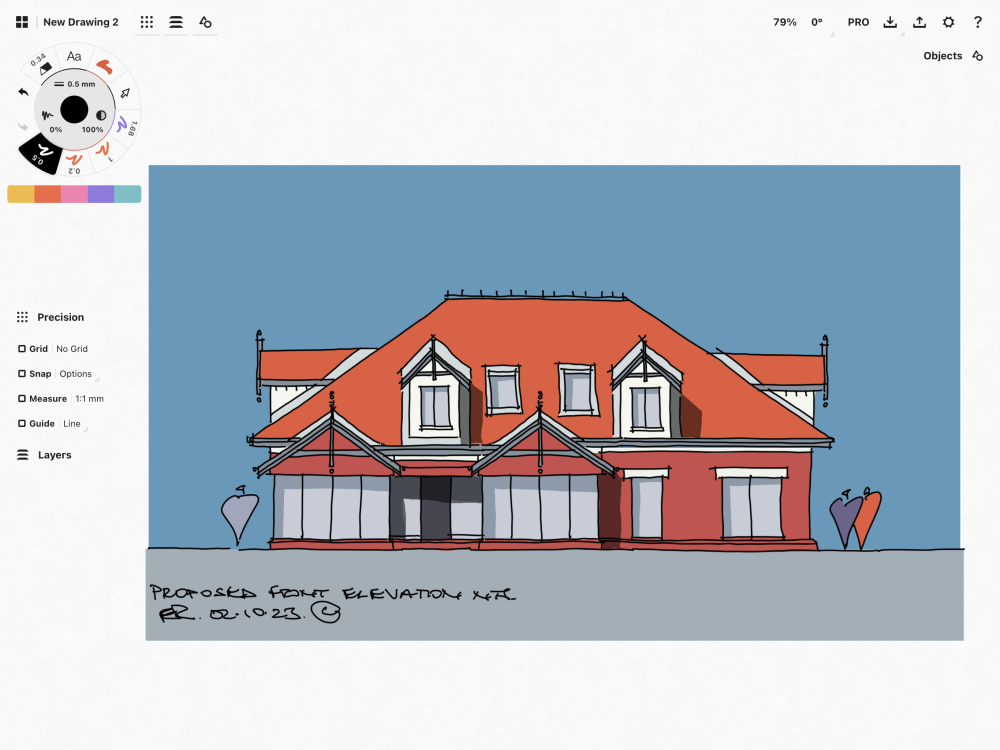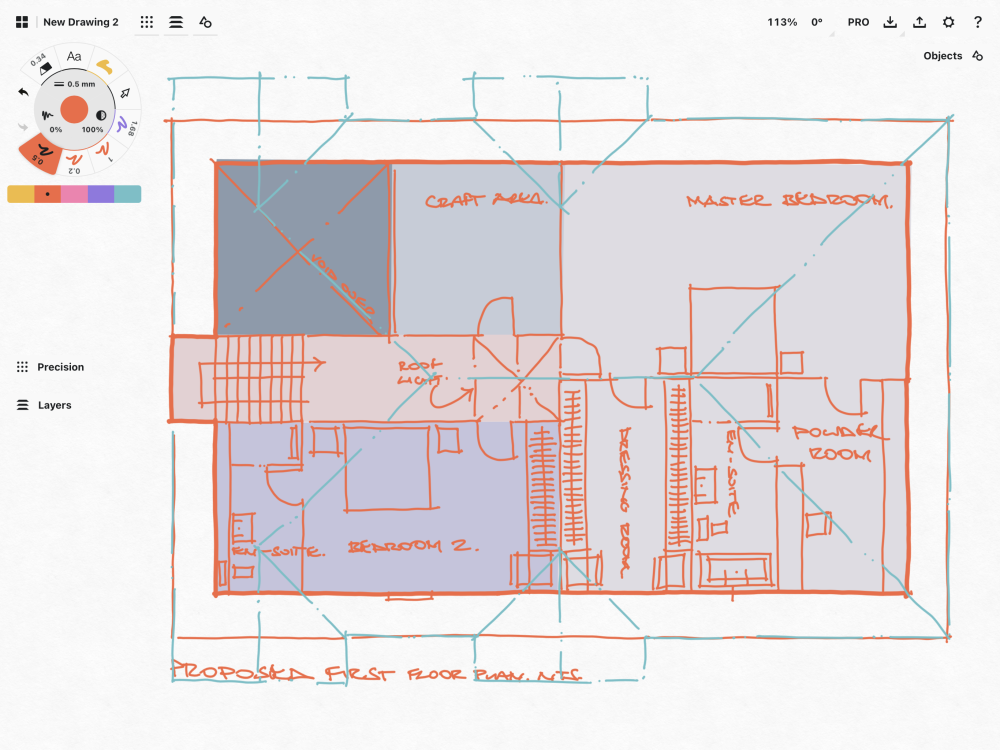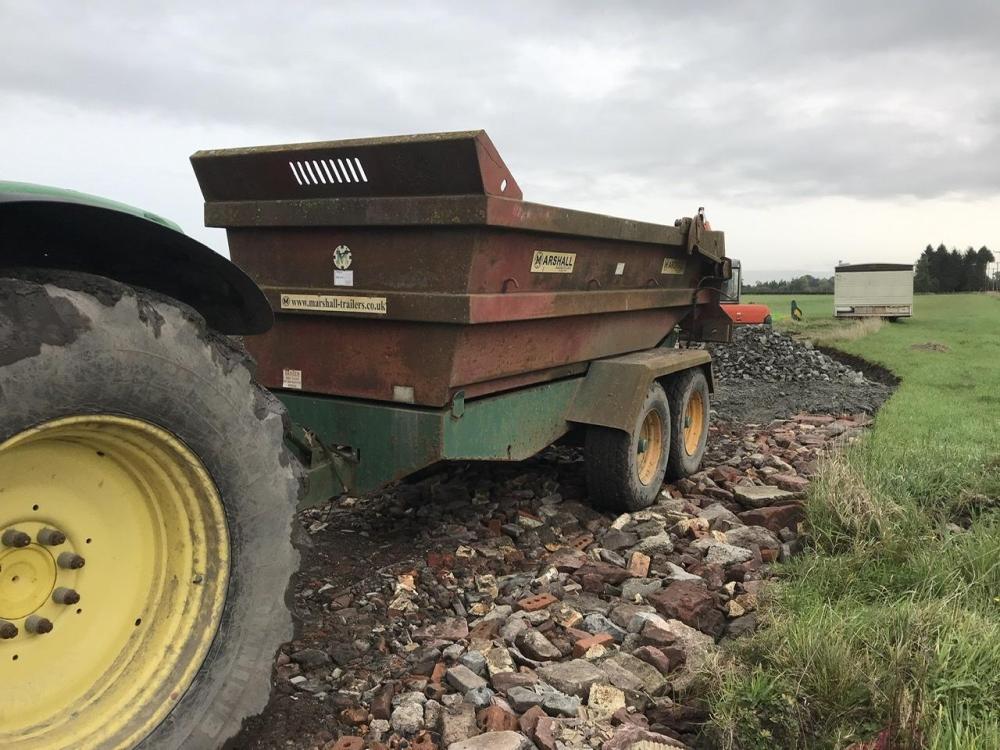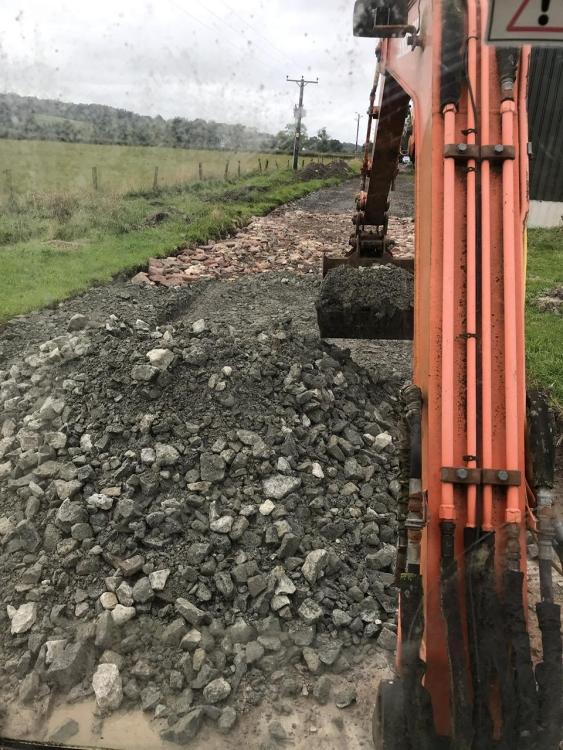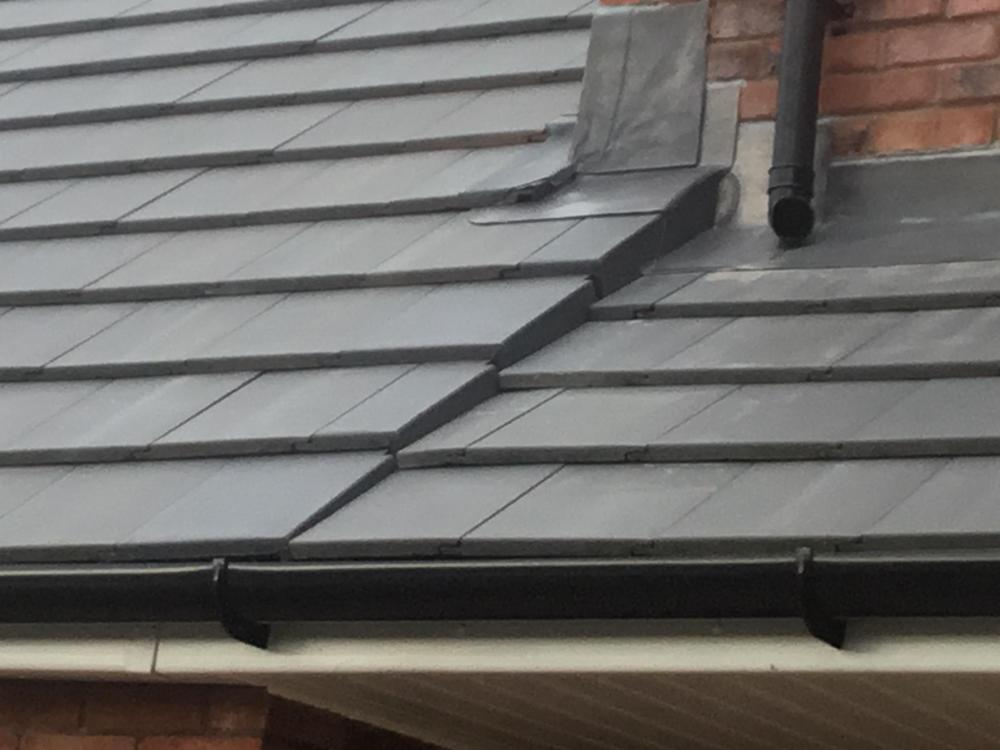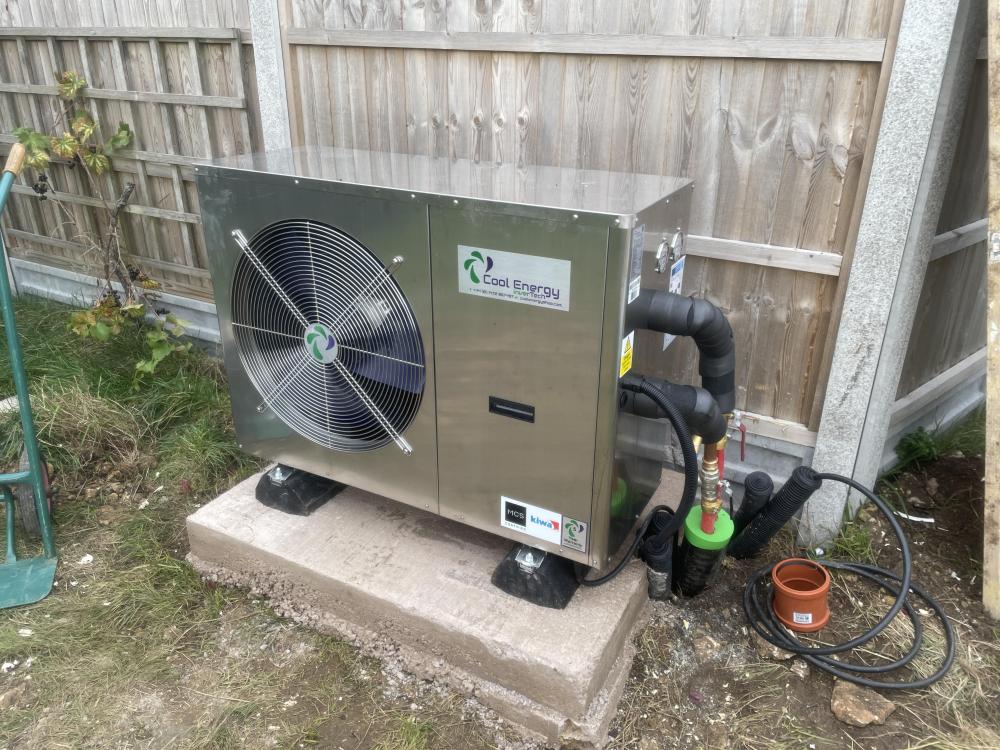Leaderboard
Popular Content
Showing content with the highest reputation on 10/02/23 in all areas
-
4 points
-
3 points
-
Absolutely do not accept their goodwill gesture. If you do, they will breathe a sigh of relief. If it’s compensation you’re after you need to play hardball. After all their mistake could have killed you or someone else in your family. You need to get the email address of the most senior person you can find but I’d aim for the CEO and write to them. By way of comparison. I complained to Greg Jackson of Octopus after their utter shambles of a meter install that dragged on for months. Their total compensation ended up at £250 and I didn’t need to push that hard to get it.3 points
-
3 points
-
3 points
-
That's water ingress, not just damp. My money is on a bodged uPVC door installation or a new patio / surface above the dpc with no perimeter drainage.2 points
-
2 points
-
My plasterer complained about shocks when working (with wet plaster) in a customers house, I traced the fault to an electric cooker (live earth), I also noticed the RCD had been removed (and left on the shelf) the customer then remembered her electrician had meant to return a few months after but never did. Along side this the hubby lost all his coy carp and was puzzled by their demise. (They were electrocuted) When I got the electrician there I laid into him big time and told him he nearly killed people and suggested he paid for the customers coy carp. Beggars belief.2 points
-
2 points
-
2 points
-
1 point
-
So it's right by a door. You need to look at the detail of that door threshold, I bet water is getting in under that somehow.1 point
-
If you hit the passive house specs and actually achieve the required performance, you need little or no additional heating input. That however is based on a load of assumptions and conditions around occupancy, habits and environment. Away on hols for a week in the winter? Your house will be freezing when you get back. Seldom used North facing box bedroom? It'll be chilly most of the winter. Our architect specialises in passive house designs and told us he'd never spec a house without some sort of supplementary heating. In reality, a couple towel rads and a storage heater or two will be all you need. We're almost passive house standard (meet all the U value requirements, MVHR is certified but we're short on air tightness) and there no way we'd be without our underfloor heating. During the cold snap last Dec, it was on almost constantly.1 point
-
Mine sits on a timber batten (TF house) that is not as wide as the aluminium cill, so outside the decking boards slide under, inside the floor tiles slide under.1 point
-
What I am failing to understand is the height of the EV can be lower just by teeing off the pipe between the control group and the cylinder water inlet boss a bit lower down. That does NOT affect the positioning of the control group or the tundish or any other pipeowrk. So I ask again from any of the professional plumbers on here, what harm does it do if you tee off the cold pipe lower down and mount the EV alongside the tank? Everything else being equal, EV mounted upright with connection at bottom etc.1 point
-
So it's a variation on an exhaust air heat pump? I would avoid personally, because I don't like an "all eggs in one basket" solution. If it breaks down, you have to fix it or replace the lot. What guarantees of future serviceability are there? I have heard storied on EAHP's not being repairable. With a separate ASHP, hot water cylinder, UFH and MVHR there is less to replace if one major part fails and cannot be repaired.1 point
-
Passivhaus heating requirements are based around a ventilation system doing 0.3ACH and the amount of heat that air flow can delivery. That being 10W/m2 max, any more the dust in the air starts to smell burnt. You really need to do a whole house heat loss calc, to see where you are heating wise. You could always back fill any heating short fall with electric panel heaters, for a couple of days a year. You are bit vague on what your system is but is it a ventilation heat pump type of thing?1 point
-
Do you have a link to the system you are thinking of? It sounds like some form of combined mvhr / warm air heating system?1 point
-
Plus 1 with above If a supplier or contractor does charge vat when he should of He’s liable I did exactly that on some newbuild apartments and ended having to pay the vat out of my own pocket 7k1 point
-
1 point
-
Many thanks, The cylinder is going to be just 1165mm high so I can see that the correct positioning of the tundish will pretty much rule a lower position for the EV1 point
-
I am a professional complainer and rarely give up largely because I have plenty of time on my hands, it takes very little effort, and I hate the way big companies treat their customers1 point
-
It can be rotated to the left or right at any angle (below horizontal obviously). I suspect many just hang vertically for the photo.1 point
-
If he bought a machine what are you paying for.? If it’s his machine that’s up to him. If your not paying VAT then you will not be reclaiming it 🤷♂️1 point
-
Seal the edges of the ply around the perimeter of the wall before plaster boarding and stagger the plasterboard joins over the plywood joins.1 point
-
Probably a simple Infra Red thermometer would do it. If you run 50-60 degree flow temp those pipes would be hard-pushed to 'hide'.1 point
-
Turn heating on full temp, use your hand on the bare concrete or a cheap infrared thermometer.1 point
-
We put a dedicated loop in to our larder/store... purely for cooling in the summer if it was ever needed.1 point
-
A decent builder should be able to do that with no problems.1 point
-
For rooms where you’re actually concerned about acoustics, why not also use sound block plasterboard too? Not much more money for belt & braces, and only needs installing on party walls (between habitable spaces) if you want to conserve funds. Me personally, I’d put SB boards on every internal wall, and white on ceilings of FF, but again I’d revert to SB on ceilings of GF.1 point
-
Your not asking them to recommend, a thick concrete, imagine a big storage heater, you can almost dump heat into at any time. It is a slow heat store. If your house is well insulated the floor temp will rarely be 1 or 2 degrees hotter than the room target temp, so becomes self regulating. If room temp exceeds floor surface temp the floor stops giving heat out. Down side of thick floor, you almost operate at 12 hour delay, but if know that you can play with it. You can batch charge the floor at cheap rates or use excess solar to store away heat etc. Thick floors take a bit of getting used to but don't see any real issues.1 point
-
50mm RWA45 here. don't know how it performs yet though as we're not finished. 😉 i doubled it for the ceilings though but with the posi-joists being 304mm deep i figured i had the room to do so.1 point
-
The Larder is big enough that It really needs a loop on it's own, but not running [or connected, just to future proof in case of shunting rooms around.1 point
-
1 point
-
1 point
-
Back in 2022, I was charged by Latzel €20.83 on a £500 order so sounds plausible.1 point
-
If you claim for a total write off for a car, you never, ever, accept the first offer. Jenny Tong got the electrical rules changed after her daughter was killed by incorrect wiring.1 point
-
The building regulations have changed regarding log burners. You really need to get a stove / chimney expert in there now for some advice before you go any further.1 point
-
Just adding to this as I've had the exact same question (UH8 + ecodan FTC6) and managed to figure out the answer. My installer had left the ASHP configured with SW 2-1 set to ON but nothing connected to IN1 (TBI.1 7-8) with the plan being that I'd connect the demand from the UH8 once I had all of that wired up. Obviously, the heating worked just fine even without a thermostat being connected to IN1 so I wondered why anything would change once the UH8 demand was actually connected up to the FTC6 IN1. A closer look at the FTC6 manual provides the answer. Without any external thermostat input, the system operates according to "Option C": In my case, the remote controller was set to "Auto Adaptation" mode where it uses the thermistor built into the remote contoller itself to provide the "thermostat" function for the FTC - ignoring anything connected to IN1. To actually make use of the demand signal from the UH8, the controller mode must be set to either "Flow temp." or "Compensation Curve" according to the manual (Option D): In my case, I've opted to go for the "compensation curve" option and can see the ASHP turning ON/OFF in accordance with the demand signal from the UH8. I think it's essential that the operating mode of the FTC remote controller is changed from "auto adaptation" as soon as the UH8 and actuators are installed since I can envision a scenario where the ASHP eats up energy without actually providing any heating. This might happen if the remote controller is set to a higher temperature than the stats? The stats will shut off the UFH circuits once they reach target temperature but the remote controller (in auto adaptation mode) will keep running the ASHP trying to reach the higher temperature set in the remote controller. But of course this will never be achieved since the stats have already shut off the circuits .... NOTE: The FTC6 manual states that the ON/OFF cycle time of the thermostat must be 10 minutes or more to prevent damage to the compressor; however, by default the neoStat v2/Polypipe UFHSMARTW "delay start" function is set to 0 minutes (immediate). To remove any possibility of short cycling, I've increased this to 12 minute on my stats.1 point
-
I had a linesman doing a pot end on a supply removal tell me one of his colleagues had a slap on the wrist for something similar.. Live to earth on a pole transformer that caused a fire. He said the landowner got 25k and an NDA from network power. His colleague had an eye test and a questionnaire and supervision for a few weeks. Your problem is that there is no damage to the property, or long term effects from the buzz you got.1 point
-
I put together a test shopping basket on the Latzel website about £2000 of tapes and membranes. The delivery charge was only 25 euro. Is this similar to what other have been charged? Seems too cheap?1 point
-
So this is the original transition on the roof. It has taken 2.5 years to get the developer to fix it. It wasn’t until I designed the way to fix it that it got done. I purchased cloak verge tiles, and the developers had their roofer install them. See the attached photo of the finished result. There is a lead tray to the gutter beneath the cloak verge1 point
-
Had to condemn the back boiler due to a ventilation issue…. Just had a week off the day job getting it installed with my builder. Been a long week of self doubt (will this keep us warm?) and sleepless nights but I think we’re over that now. All new pipework throughout, rads sized for 45 deg at -4, three Smiths Ecovector fan coils where we didn’t have space on walls for larger radiators. I did heat loss calcs in two separate packages, the freedom toolkit and heat engineer. They both came out around 6.8-7kW at -4, with the old double glazing (we’re replacing that at the moment) and the uninsulated timber floors (which we start on on Monday). Lagging, thermostat, and some more lagging to do tomorrow. All parts and my builder for a weeks day rate, just got change out of £12k. More than I thought, but the rads came to £1200 and the ecovectors were £1400…. I haven’t bothered to calculate a payback period, we needed a new heating system, and if these rads and pipework last as long as the last system (installed in ‘86 by the council, after the previous coal fired boiler had done 40yrs) then I’ll be happy. At least that’s 18-19000kWh of gas (our average annual consumption) that we can leave to be burnt in a ccgt. I’m thinking we’ll swap an £1800 gas bill for £1200 ish uplift in the electric bill, before we even consider solar and battery. Oh and to anyone thinking that hi-line eFlex underground pipe is flexible, it isn’t….. what a sod to install.1 point
-
Hep2O is universally available as “barrier pipe” which is what it essentially is. There are plenty of other manufacturers out there, some cheaper but I tend to stick at single manufacturer across the lot in case of any warranty issues.1 point
-
I'm going for moisture resistant caber floor and tanking around wet areas (bathroom and shower area)1 point
-
For hundreds of year people thought you did not need a flushing bog in the house. Some people still think that antibiotics and vaccines are unnecessary, but happy to take pills their friends give them.1 point
-
+1 for Latzel, German VAT refunded next day. Ordered Tuesday evening and arrived Saturday morning. Amazing service and a bonus on the price which was easily a third cheaper than the UK suppliers.1 point
-
My old fixed tariff was due to expire beginning of Feb, so I moved over to Octopus in anticipation of that, and in order to get rebate payments as I've signed up to Ripples second wind turbine project. I signed up via a link to join the Cosy tariff. Got switched over to Octopus week and a half ago, and was switched onto Cosy on Thursday last week. For our house we have an 8kW heat pump connected to a 300L DHW tank and a 300l buffer to tank for whole house UFH. We've also got 7kW solar, with 14kWh batteries installed last year. So, there was a lot of fiddling and tinkering with settings and timers to try and get the best out of it, and it'll take a few more days/ weeks to get the temps and timing right. But basically, the whole aim is to try and run everything ad charge everything during the 2x3hr cheap slots so we import the least amount of electricity possible at all other times. At the mo, I've got the batteries set to charge to 75% overnight which sees us through the morning and breakfast until 1pm easily enough with a bit of spare capacity for charging if/when the sun shines, and then to 100% by the end of the 1-4pm window, ready to see us through the night until 4am. The heat pump is set to come on during the cheap windows to top up the hot water tanks, and the room thermostats are set to heat the rooms only during the 3hr slots, morning up to 20/21 for bedrooms/other rooms, afternoon up to 21/22deg, so slightly warmer to keep a decent temp until they come back on at 4am. Seems to be working out quite well so far, and I think this tariff really benefits from having batteries which really take advantage of the cheap slots. I think through the year and more solar is produced I'll be able to reduce some of those battery charge levels as more and reliable solar can top them up. Plus, the heating will be off saving muchos kWhs!1 point
-
Sorry about that - yes, it's supposed to be in line with the principal elevation. It's definitely a conservation area and in the greenbelt. For the main property, I had to jump through all sorts of hoops, using reclaimed slates, specific bricks, specific types/materials for the windows, etc. I had to use flush sash UPVC windows in the original bit and aluminium in the new bit - you can't make this kind of nonsense up! The existing garage is a 1950s-70s style with rendered brick, a slate roof and steel up and over doors. For the new garage, they're insisting on reclaimed slate, timber doors/cladding and even cast iron rainwater goods - I think we'll be able to forego the latter though as the main property used a cast-iron effect aluminium.0 points
-
0 points
This leaderboard is set to London/GMT+01:00




